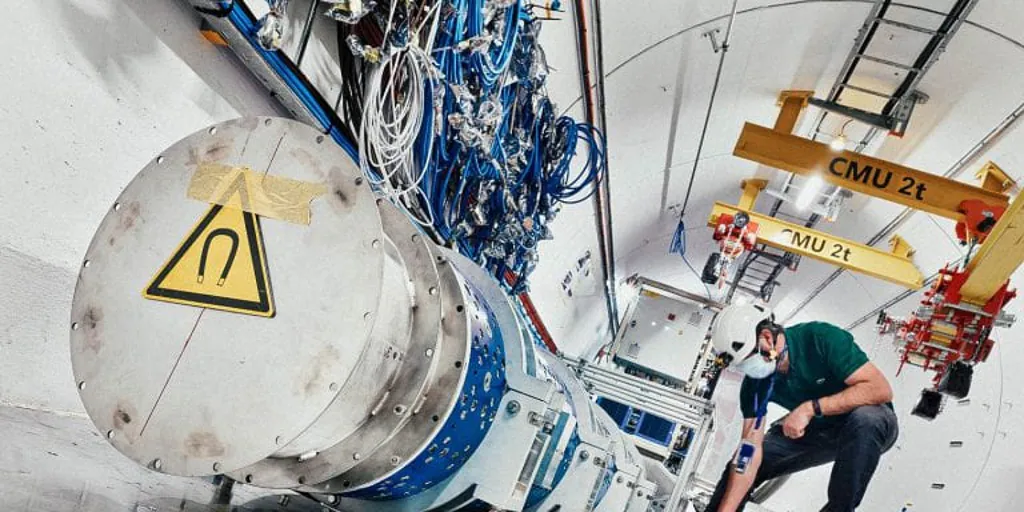They are known as ‘ghost particles’, and for the first time a team of physicists has managed to create them in the laboratory. Neutrinos may be among the most abundant subatomic particles in the Universe, but they have no electrical charge and are so light that they barely interact with other matter. In fact, they pass through it cleanly, as if it did not exist and, with rare exceptions, do not collide or interact with any of the particles that solid objects are made of.
With every second that passes and without us even realizing it, billions of neutrinos pass through every square inch of our skin, and then the rest of the planet we walk on until they come out like nothing on the other side. Like true subatomic ‘spectres’, neutrinos simply glide through matter as if it weren’t there. And now, finally, the ‘ghost’ has been captured by a machine.
Led by physicists from the University of California Irvine (UC Irvine), the feat has been carried out by a team of 80 researchers from 21 international institutions, and announced just a few days ago by Brian Petersen, a particle physicist at CERN. , the European Council for Nuclear Research in Geneva, Switzerland, during the 57th edition of the ‘Rencontres de Moriond Electroweak Interactions and Unified Theories’ conference, held in Italy.
The milestone is the most recent result of the Forward Search Experiment, or FASER, a particle detector designed and built by an international group of physicists and installed at CERN. There, FASER scrutinizes and classifies the particles produced by the Large Hadron Collider in search of neutrinos and dark matter.
“We have discovered neutrinos from an entirely new source, particle colliders, in which two beams of particles collide with each other at extremely high energy,” explains Jonathan Feng, a UC Irvine particle physicist and co-spokesperson for the FASER collaboration. .
born of energy
Discovered nearly 70 years ago by the late physicist and Nobel laureate Frederick Reines, neutrinos are, after photons, the most abundant particles in the Universe and, in the words of Jamie Boyd, FASER co-spokesperson, “were very important in establishing the standard model of particle physics. But until now no neutrino produced in a collider had been detected by an experiment.”
Under natural conditions, neutrinos arise from extremely energetic events or circumstances, such as nuclear fusion that occurs at the heart of stars or supernova explosions. And although they go almost unnoticed due to their near-zero mass, they are so numerous that physicists believe that, taken together, they probably affect the gravity of the entire Universe.
Despite its spooky nature, very occasionally, a cosmic neutrino collides with another particle. And as it does so, it produces a faint burst of light. To locate them, physicists have built large underground detectors in various parts of the world, several kilometers deep, under high mountains or in the middle of the eternal ice of Antarctica. Little precaution is taken to ensure that these detectors remain isolated from any other source of radiation.
high energy neutrinos
Until now, the vast majority of neutrinos ‘captured’ in this way and studied by physicists have been of low energy. But neutrinos detected by FASER, which generates the highest energy ever produced in a laboratory, produce neutrinos that are similar to those found when particles from deep space trigger dramatic particle showers in our atmosphere. And those very high-energy neutrinos, Boyd says, “can tell us about deep space in a way that we can’t learn in any other way.”
In itself, FASER is unique among particle detection experiments. Unlike other CERN detectors, such as ATLAS, which is several stories high and weighs thousands of tons, FASER weighs about a ton and fits neatly inside a small side tunnel of the complex. And it was designed and built, moreover, in just a few years, using spare parts from other experiments.
In the words of Dave Casper, an experimental physicist at UC Irvine, “Neutrinos are the only known particles that the much larger experiments at the Large Hadron Collider cannot directly detect, so the successful observation of FASER means that they will finally be detected.” it is exploiting the full physical potential of the collider.” Another of FASER’s objectives is to help identify the particles that are supposed to make up dark matter, never directly observed until now.
In 2021, six potential neutrino candidates were identified in FASER. And now, the researchers confirm the discovery, and they do so at the 16 sigma level of significance. Which means that the probability that the signals have occurred by chance is so low that it is almost zero; normally a 5 sigma level is enough to be able to claim a discovery in particle physics.
The work, of course, continues, and this new source of neutrinos will help, from now on, to understand much better some of the most unfathomable mysteries of the Universe in which we live.
